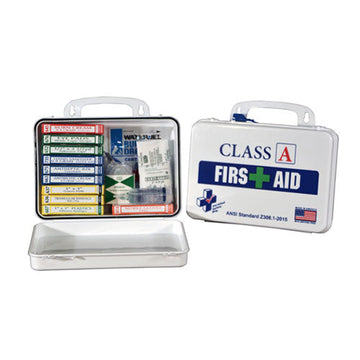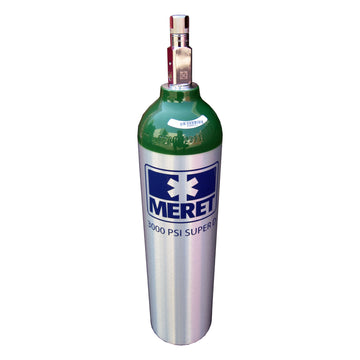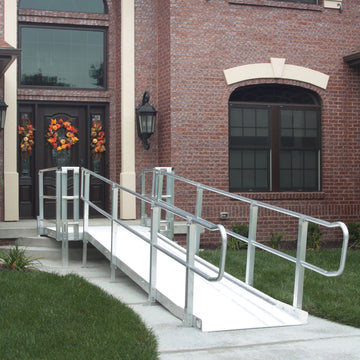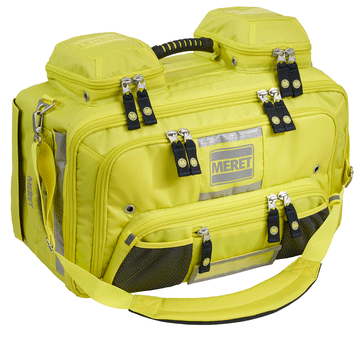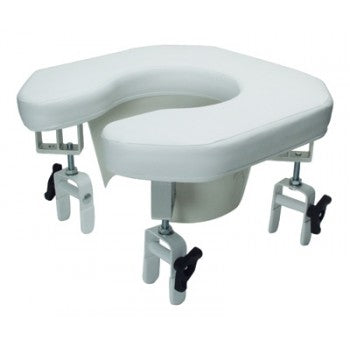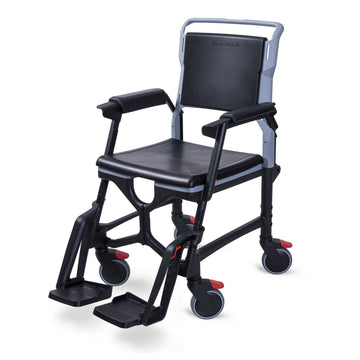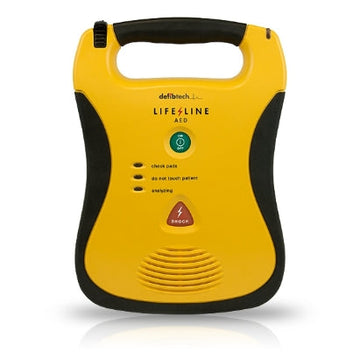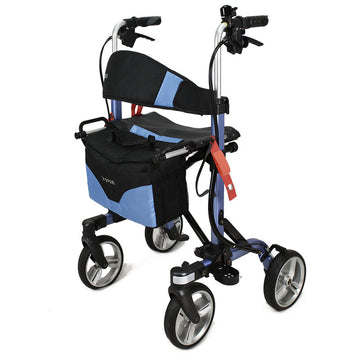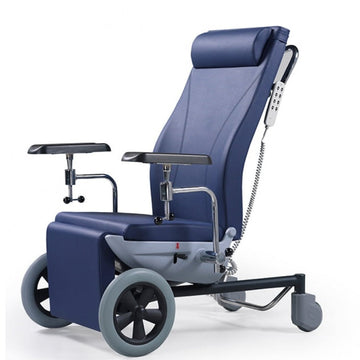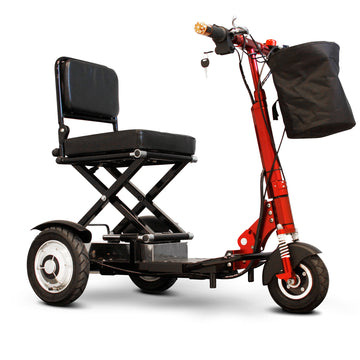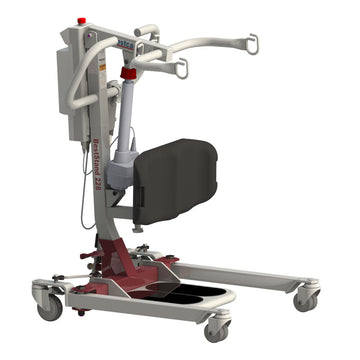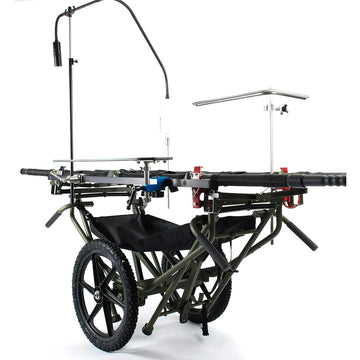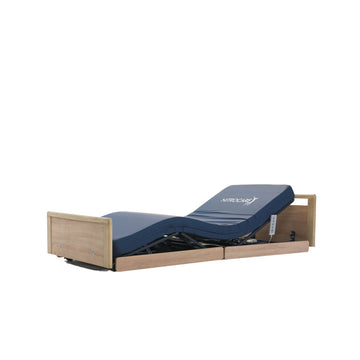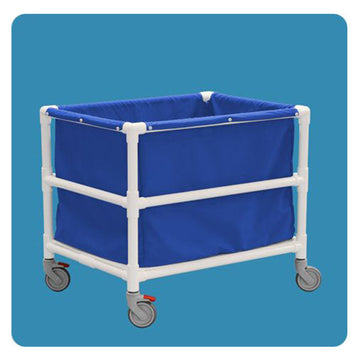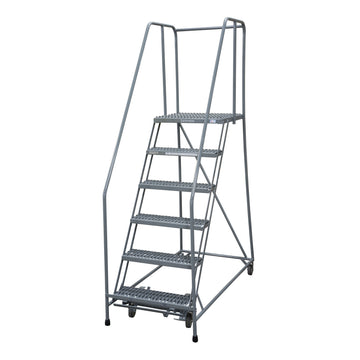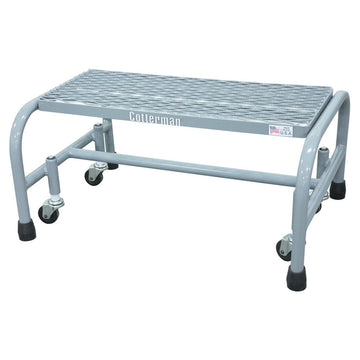Wheelchair ramps are crucial to providing the necessary access and mobility for wheelchair users. The correct ramp is designed for freedom and safety, making it easy to overcome any terrain. This in-depth article will review some of the top wheelchair ramps, discuss what makes a good one, and inspire you to hone in on which style suits your needs (and wants) the most.
Types of Wheelchair Ramps
Knowing the various sorts of wheelchair ramps can help in picking a suitable one for perseverance:
Portable ramps
These are lightweight and foldable, so they can be carried in a car or stored away when unnecessary. Most portable ramps are constructed of aluminum, which is light and strong. They are usable in many scenarios, from homes and workplaces to moving vehicles. Given their portability, they are not designed for permanent installation and should be used as temporary access solutions.
Threshold Ramps

For minor differences in height, like door thresholds, designed to provide a smooth transition from one room to another or over slight obstacles. These ramps are smaller and can be made of metal, rubber, or plastic. Threshold ramps, also called threshold wedges, are needed for indoor use when there are minimal level differences that create a problem for wheelchair users.
Modular Ramps
Customizable and modifiable, these ramps can be constructed together to adjust for multiple angles, thus enabling use in buildings or dwellings requiring a permanent ramp. They are typically made of aluminum or steel, and modular units assemble to fit any space. They are great for either temporary installation or permanent placement, allowing for layout changes in the future.
Fixed Ramps
These are permanent ramps made with more robust materials, such as concrete or metal. They fall under the fixed category, which means they have a place and cannot be placed somewhere else permanently, whether in a public building area or even a home. The permanent ones need to be professionally installed and will become a part of the unit. They are solid and can take a beating from frequent use and harsh weather conditions.
Vehicle Ramps
There are a variety of styles, including folding and telescoping, for loading wheelchairs into a vehicle. These ramps allow wheelchair users to get on and off cars as quickly and safely as possible. Relatively light vehicle ramps allow for quick setup and removal.
Key Features of the Ideal Wheelchair Ramp
These are some of the features that one must identify while looking for an ideal wheelchair ramp, although we have established what a good-quality residential handicapped stair lift is.
Proper Slope and Length
The ADA allows a maximum slope of 1:12 for ramps, translating to one foot (or twelve inches) of ramp run per inch rise. This will give you a very safe and manageable incline. Depending on its length, a 1:8 slope might be suitable for a residential ramp, but that decision must be made in the context of individual use and user safety.
Non-Slip Surface
Neoprene is key to reducing the risk of accidents, particularly when wet. Textured materials or non-slip coatings can further aid traction. This feature is necessary, particularly outdoors, for ramps exposed to weather conditions. Maintaining the slip resistance of your surface under wet conditions is crucial for consumer security.
Weight Capacity
Make sure the ramp can hold your weight and that of the wheelchair. Most ramps, particularly those made for power wheelchairs, are specified with a maximum weight limit. You will want to ensure that the ramp is clearly labeled with a weight capacity and, ideally, choose one with high-lifting versions for more beefy power chairs or riders.
Width
The ramp should be wide enough for the wheelchair to move comfortably. According to the ADA, public ramps should be at least 36 inches wide. This width allows the wheel not to slip off the sides. Larger wheelchairs or scooters may require wider ramps.
Safety
Features: Handrails, edge barriers, and landing platforms are crucial in preventing falls from high areas or providing extra support. Ensure that the handrail is strong and at a usable height. Edge barriers stop the wheelchair from falling over the side, and resting points on landing platforms provide places to relax or turn around quickly if needed.
Durability
Some materials are generally more rugged than others, like an aluminum and steel frame with treated wood decking, which will last. Outdoor ramps are made of durable material and are weather-resistant. The durability factor matters greatly regarding outdoor ramps because they have rain, snow, and UV rays. Selecting weather-resistant and rust-proof materials adds life to the ramp.
Ease of Installation
While some ramps are relatively simple to install, many require professional help due to the equipment and skills needed for their assembly. Select one that fits the installation you're capable of doing and your needs. Permanent ramps typically have a secure installation process that can be complicated and difficult to do alone. If you are looking for something less permanent or don't have the time, then it is better to use other styles, such as modular wheelchairs; they're quick and easy.
Choosing the Right Wheelchair Ramp
Here are some of the things that you must consider when buying a wheelchair ramp so that it can serve its purpose well.
Intended Use - Where and how will the ramp be used? One example is a portable ramp that can travel to different locations, while one of these permanent ramps cannot. This will direct you to the best type and other features that must be included.
Budget - Wheelchair ramp prices vary according to their type, size, and the materials used. Establish a budget that falls somewhere between affordability and quality. Although it may seem tempting to go for a more budget-friendly option, remember what you are dealing with here, and investing in a quality ramp will only ensure the sustainability of your product.
Space Availability - Always measure where you want to install the ramp so that it cannot only fit into place but also move freely. Take into account space restrictions and any obstacles. Without accurate measurements, problems with installation can occur, and the ramp might not provide the required accessibility.
User Motility - Consider the user's mobility and whether he can use it or needs help getting up a ramp. Those with less upper body strength may require a ramp with a lower slope and better controls for their safety.
Standards Compliance - The ramp must comply with the relevant standards, such as the ADA, to ensure its safety and accessibility. Complying with these standards helps ensure that the ramp is well-designed and provides a safe, usable path of travel for all users.
Compliance with ADA Standards
Following ADA standards make the ramp safe and available for all users. Essential ADA requirements include:
Maximum Slope
The slope of a ramp must be one in. to every foot animate. For example, a 6-inch rise in a ramp must have at least a six-foot run. The gradual incline of the ramp means that it does not require much work or energy to maneuver, making this one a very safe and user-friendly piece.
Wider
Ramps must have an unobstructed width of at least 36 inches for a wheelchair. This width is designed to accommodate the largest possible object that needs to pass over it without being too top-heavy, such as a wheelchair.
Landings
The top and bottom of the ramp should have landings to allow resting and easy transition. The landings should be 60 inches long. They also significantly help users change direction safely and offer stopping/resting areas called landings.
Handrails
All ramps, including level landings, must be provided with handrails. Extensions that do not present a hazardous projection shall be allowed beyond the top and bottom of ramp runs. The handrails were also built for extra support and stability while using the ramp.
Flat
To move securely, the bottom must be stable, substantial, and slip-resistant. Improved Grip: A slip-resistant surface reduces the likelihood of slipping that otherwise occurs in wet or icy conditions.
Final Thoughts
Choosing the right wheelchair ramp requires Full consideration of factors such as type, features, and compliance with disability standards. This article will help you identify the different types of ramps and their main features that are essential in selecting a ramp to maximize safety and reliability while offering convenience for wheelchair users. With such recommendations and insights, you can choose a suitable portable ramp for travel needs or the best permanent one to enhance independence and ensure superior mobility for any wheelchair user.
Keep in mind that the best wheelchair ramp not only allows better movement but also improves your quality of life, making all daily activities easier for anyone with mobility issues. Select with care, assemble in a safe way, and finally, look after everything to keep users of the system happy.


